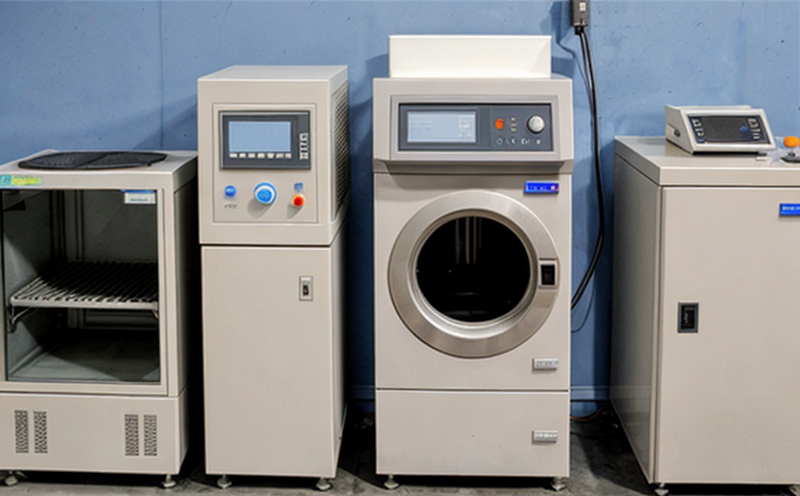ISO 10993 17 Assessment of Soluble Products from Nanomaterials in Medical Devices
The ISO 10993-17 standard is pivotal for assessing the biocompatibility of nanomaterials used in medical devices. This standard specifically addresses the dissolution and leaching behavior of nanomaterials during their lifecycle, ensuring that any soluble products do not pose a risk to patients or users. Nanomaterials are increasingly integrated into medical devices due to their unique properties such as enhanced strength, flexibility, and biocompatibility, but these same characteristics can also lead to the release of soluble compounds.
The testing protocol outlined in ISO 10993-17 is designed to evaluate the dissolution or leaching of nanomaterials into a simulated body fluid (SBF) under controlled conditions. The SBF mimics human physiological fluids and provides a realistic environment for evaluating the potential release of soluble products from these materials.
Testing typically involves soaking the medical device in the SBF for an extended period, often up to 28 days, depending on the specific requirements of the device. During this time, the solution is regularly sampled at predefined intervals to monitor the concentration of any leachable compounds. The samples are then analyzed using a range of analytical techniques such as high-performance liquid chromatography (HPLC), inductively coupled plasma mass spectrometry (ICP-MS), and atomic absorption spectroscopy (AAS) to identify and quantify the soluble products.
The key objective is to determine whether the soluble compounds are within acceptable limits set by regulatory authorities. The standard provides specific acceptance criteria based on the type of nanomaterial, its intended use in the medical device, and the potential risk it poses to human health. Compliance with these standards ensures that medical devices incorporating nanomaterials meet stringent safety requirements.
Understanding the dissolution profile is crucial for several reasons. Firstly, it helps in predicting the long-term stability of the material within the device. Secondly, it aids in identifying any potential risks associated with prolonged contact between the nanomaterial and body fluids. Lastly, it supports the development of more robust and reliable medical devices that are safe for use in various clinical settings.
The ISO 10993-17 standard is particularly important in the context of emerging technologies where nanomaterials play a significant role. By providing a standardized approach to assessing soluble products, it ensures consistency across different manufacturers and helps maintain high-quality standards in the medical industry.
Why It Matters
The importance of ISO 10993-17 cannot be overstated, especially given the increasing use of nanomaterials in medical devices. These materials offer numerous benefits, including improved mechanical properties and enhanced biocompatibility, but they also pose unique challenges regarding their interaction with biological systems.
- Regulatory Compliance: Adherence to ISO 10993-17 ensures that manufacturers meet the stringent regulatory requirements set by authorities like the FDA and CE marking. This compliance is essential for market access in many countries.
- Patient Safety: By rigorously testing the dissolution of nanomaterials, this standard helps prevent the release of harmful compounds into the human body. Ensuring patient safety is paramount in medical device development.
- Product Integrity: The assessment process helps maintain product integrity by identifying potential issues early in the design and manufacturing stages. This leads to more reliable and consistent products.
- Innovation: As nanotechnology continues to evolve, standards like ISO 10993-17 provide a framework for innovation without compromising safety. This enables researchers and developers to explore new applications of nanomaterials in medical devices.
The standard is particularly significant in the context of personalized medicine and advanced diagnostics, where nanomaterials are used to enhance the sensitivity and specificity of diagnostic tools. By ensuring that these materials do not pose risks during use, ISO 10993-17 supports the development of safer and more effective medical devices.
Quality and Reliability Assurance
The assessment process under ISO 10993-17 is designed to provide robust quality assurance and reliability for nanomaterials used in medical devices. The testing protocol ensures that any soluble products from these materials are within safe limits, thereby enhancing the overall quality of the device.
Quality managers and compliance officers rely on this standard to ensure that their products meet regulatory requirements and industry standards. R&D engineers use it as a guide for optimizing the design and material selection process, ensuring that nanomaterials integrate seamlessly into the medical device while minimizing risks.
The testing procedure also plays a crucial role in maintaining reliability across different batches of materials. By standardizing the dissolution assessment, manufacturers can ensure consistent performance and quality from one batch to another. This reliability is particularly important for devices used in critical care settings where consistency is paramount.
Moreover, ISO 10993-17 supports the continuous improvement process by providing data that can be used to refine manufacturing techniques and materials. This iterative approach ensures that the medical device industry remains at the forefront of innovation while maintaining high safety standards.
Environmental and Sustainability Contributions
The ISO 10993-17 standard not only ensures patient safety but also contributes to environmental sustainability in several ways. By rigorously assessing the dissolution of nanomaterials, this standard helps prevent the release of harmful compounds into the environment.
- Reduction of Environmental Impact: Ensuring that soluble products do not exceed safe limits minimizes the risk of contamination in water bodies and soil.
- Sustainable Manufacturing Practices: The testing process encourages manufacturers to adopt sustainable practices by identifying potential environmental risks early in the development stage.
- Eco-friendly Products: By adhering to this standard, medical devices incorporating nanomaterials can be designed with a lower environmental footprint, contributing to a more sustainable future.
The assessment of soluble products from nanomaterials also supports the broader goal of reducing waste and promoting recycling. By ensuring that materials are safe for disposal, manufacturers can contribute to circular economy practices.
Furthermore, ISO 10993-17 aligns with international sustainability initiatives such as the United Nations Sustainable Development Goals (SDGs), particularly SDG 6 (Clean Water and Sanitation) and SDG 12 (Responsible Consumption and Production). By minimizing environmental impact, this standard supports the global effort towards a more sustainable future.





